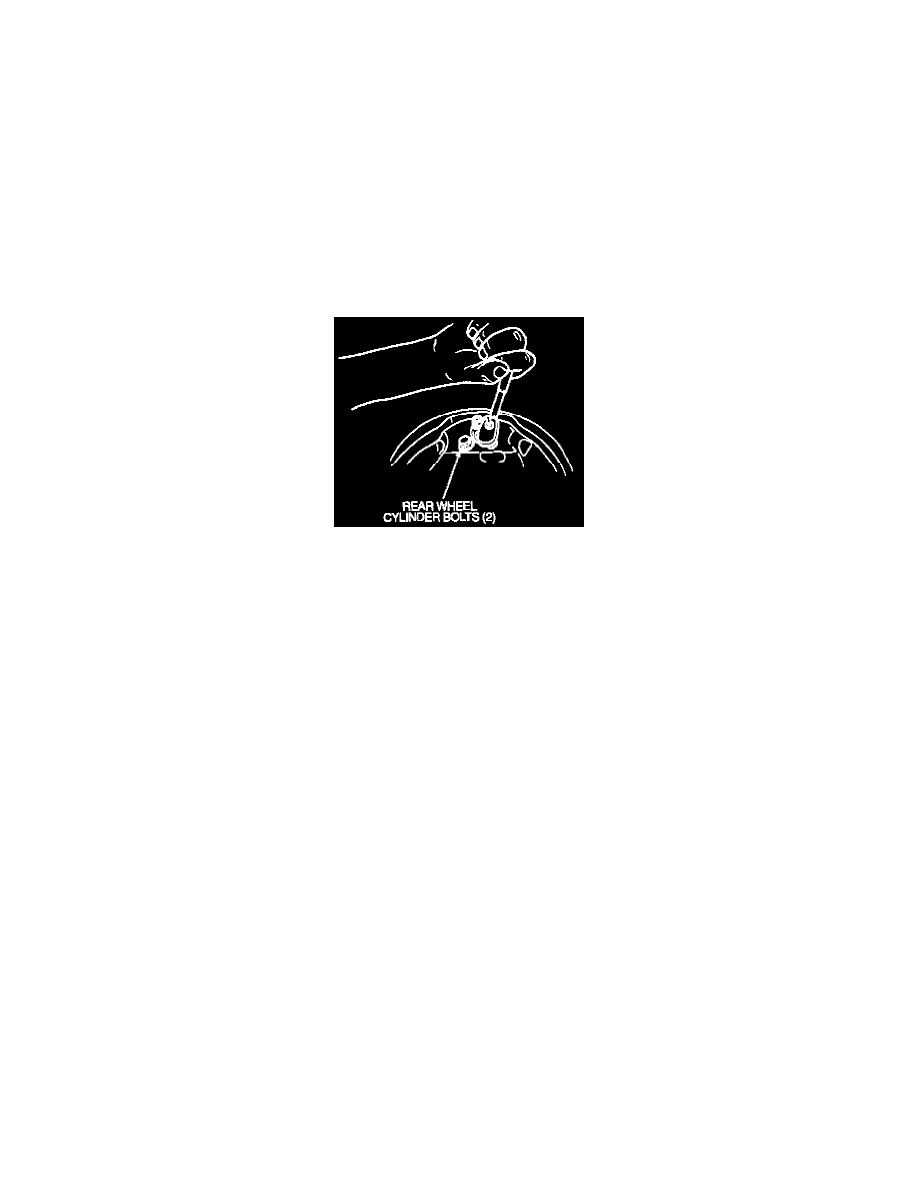Windstar V6-232 3.8L (1995)

Wheel Cylinder: Service and Repair
Removal and Installation
WARNING: Do not inhale dust from brakes, clutches or associated components. Inhalation of dust containing asbestos fibers can be injurious
to your health and could cause cancer or asbestosis. Compressed air or brushes must not be used to clean brakes, brake drums, clutches and
associated components. A vacuum cleaner equipped for this purpose should be carefully used to remove any dust. Adherent dust should be
removed with a damp rag. Any dust should be contained in a sealed and labeled bag for disposal. Wear an approved high efficiency cartridge
or air line respirator and use extra caution to avoid breathing this dust. Use non-asbestos replacement parts whenever possible.
CAUTION: Avoid contamination of any brake lining material with brake fluid. Do not install or allow to be put in service any contaminated brake
lining material.
REMOVAL
1. Remove the brake drum.
2. Remove rear brake shoes and linings.
3. Disconnect wheel cylinder brake hose from rear wheel cylinder.
3. Remove two rear wheel cylinder bolts.
4. Remove rear wheel cylinder.
INSTALLATION
1. To install, reverse Removal procedure.
2. Tighten rear wheel cylinder bolts to 12-18 Nm (9-13 ft lb).
3. Tighten wheel cylinder brake hose flare nut to 15-20 Nm (11-14 ft lb).
4. Perform system brake bleeding procedures.
